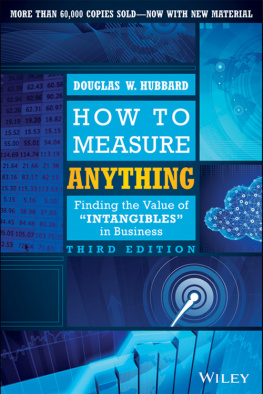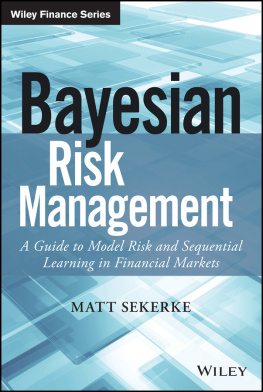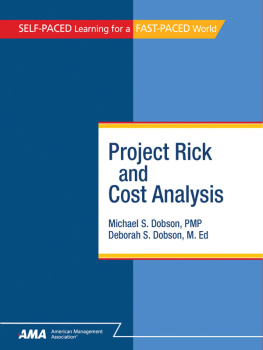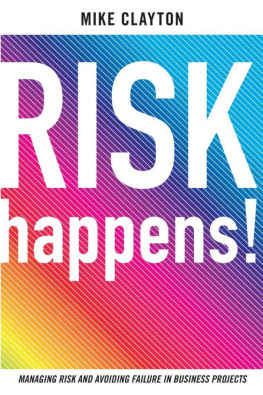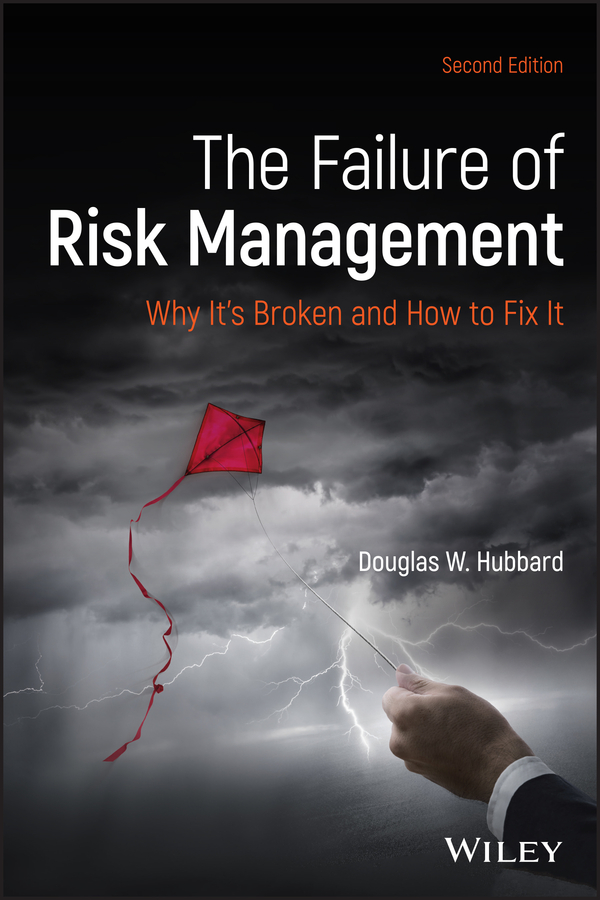Douglas W. Hubbard - The Failure of Risk Management: Why Its Broken and How to Fix It
Here you can read online Douglas W. Hubbard - The Failure of Risk Management: Why Its Broken and How to Fix It full text of the book (entire story) in english for free. Download pdf and epub, get meaning, cover and reviews about this ebook. year: 2020, publisher: Wiley, genre: Business. Description of the work, (preface) as well as reviews are available. Best literature library LitArk.com created for fans of good reading and offers a wide selection of genres:
Romance novel
Science fiction
Adventure
Detective
Science
History
Home and family
Prose
Art
Politics
Computer
Non-fiction
Religion
Business
Children
Humor
Choose a favorite category and find really read worthwhile books. Enjoy immersion in the world of imagination, feel the emotions of the characters or learn something new for yourself, make an fascinating discovery.

- Book:The Failure of Risk Management: Why Its Broken and How to Fix It
- Author:
- Publisher:Wiley
- Genre:
- Year:2020
- Rating:5 / 5
- Favourites:Add to favourites
- Your mark:
The Failure of Risk Management: Why Its Broken and How to Fix It: summary, description and annotation
We offer to read an annotation, description, summary or preface (depends on what the author of the book "The Failure of Risk Management: Why Its Broken and How to Fix It" wrote himself). If you haven't found the necessary information about the book — write in the comments, we will try to find it.
The Failure of Risk Management provides effective solutionstosignificantfaults in current risk analysis methods. Conventional approaches to managing risk lack accurate quantitative analysis methods, yielding strategies that can actually make things worse. Many widely used methods have no systems to measure performance, resulting in inaccurate selection and ineffective application of risk management strategies. These fundamental flaws propagate unrealistic perceptions of risk in business, government, and the general public. This book provides expert examination of essential areas of risk management, including risk assessment and evaluation methods, risk mitigation strategies, common errors in quantitative models, and more. Guidance on topics such as probability modelling and empirical inputs emphasizes the efficacy of appropriate risk methodology in practical applications.
Recognized as a leader in the field of risk management, author Douglas W. Hubbard combines science-based analysis with real-world examples to present a detailed investigation of risk management practices. This revised and updated second edition includes updated data sets and checklists, expanded coverage of innovative statistical methods, and new cases of current risk management issues such as data breaches and natural disasters.
Identify deficiencies in your current risk management strategy and take appropriate corrective measures Adopt a calibrated approach to risk analysis using up-to-date statistical tools Employ accurate quantitative risk analysis and modelling methods Keep pace with new developments in the rapidly expanding risk analysis industry Risk analysis is a vital component of government policy, public safety, banking and finance, and many other public and private institutions. The Failure of Risk Management: Why Its Broken and How to Fix It is a valuable resource for business leaders, policy makers, managers, consultants, and practitioners across industries.
Douglas W. Hubbard: author's other books
Who wrote The Failure of Risk Management: Why Its Broken and How to Fix It? Find out the surname, the name of the author of the book and a list of all author's works by series.

